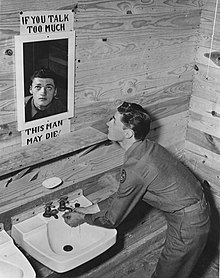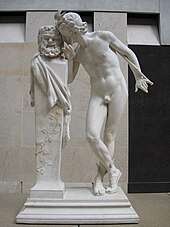
Back Geheimhouding Afrikaans سر Arabic Секретност Bulgarian محرمانگی Persian סודיות HE Kerahasiaan ID 秘密 Japanese ಗುಟ್ಟಾಗಿಡುವಿಕೆ Kannada Нууц Mongolian Hemmelighold NB


Secrecy is the practice of hiding information from certain individuals or groups who do not have the "need to know", perhaps while sharing it with other individuals. That which is kept hidden is known as the secret.
Secrecy is often controversial, depending on the content or nature of the secret, the group or people keeping the secret, and the motivation for secrecy.

Secrecy by government entities is often decried as excessive or in promotion of poor operation[by whom?]; excessive revelation of information on individuals can conflict with virtues of privacy and confidentiality. It is often contrasted with social transparency.


Secrecy can exist in a number of different ways: encoding or encryption (where mathematical and technical strategies are used to hide messages), true secrecy (where restrictions are put upon those who take part of the message, such as through government security classification)[citation needed] and obfuscation, where secrets are hidden in plain sight behind complex idiosyncratic language (jargon) or steganography.
Another classification proposed by Claude Shannon in 1948 reads that there are three systems of secrecy within communication:[1]
- Concealment systems, including such methods as invisible ink, concealing a message in a harmless text in a fake covering cryptogram, or other methods in which the existence of the message is concealed from the enemy.
- Privacy systems, for example, voice inversion, is a special equipment required to recover the message.
- "True" secrecy systems where the meaning of the message is concealed by the cypher, code, etc. Although, its existence is not hidden. The enemy is assumed to have any special equipment necessary to intercept and record the transmitted signal.
- ^ Shannon, C.E. (1946–1948). "Communication Theory of Secrecy Systems" (PDF): 1.
{{cite journal}}: Cite journal requires|journal=(help)
© MMXXIII Rich X Search. We shall prevail. All rights reserved. Rich X Search